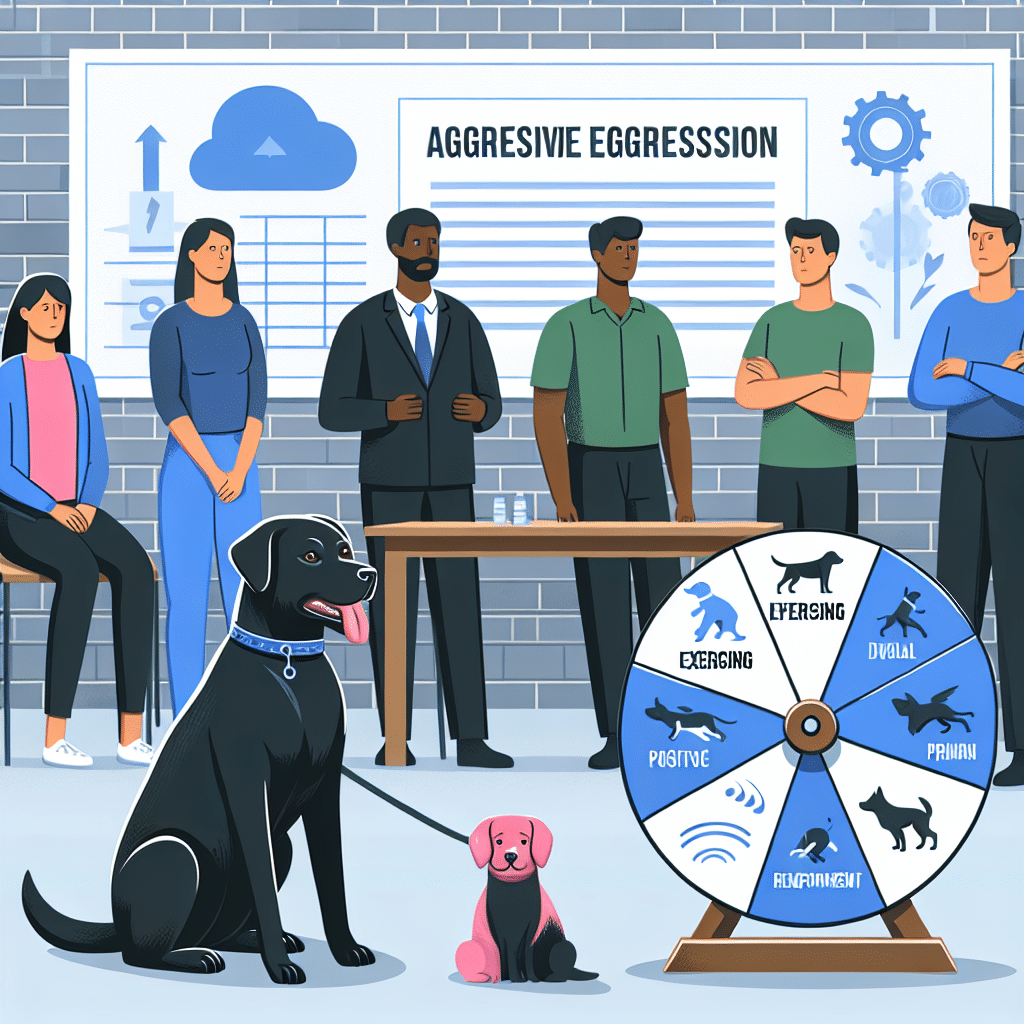Understanding Aggressive Dog Behavior
Aggressive behavior in dogs can stem from various factors, including fear, territorial instincts, pain, or lack of socialization. To effectively manage and correct such behaviors, it is essential to identify the underlying triggers. Accurate identification allows for tailored intervention strategies.
1. Recognize Aggressive Signals
Before addressing aggressive behavior, learn to recognize various signs of aggression. Body language includes raised hackles, stiff body posture, growling, snapping, or biting. Dogs may also display aggressive behaviors when they feel threatened or cornered. Understanding these signals helps you to intervene before the situation escalates.
2. Identify Triggers
Keep a detailed journal of your dog’s behavior to identify specific triggers that lead to aggression. Note the situations, environments, people, or other animals involved. Patterns will emerge, providing insight into what provokes your dog and allowing you to work towards desensitization or avoidance strategies.
3. Consult a Professional
If your dog’s aggression is concerning or unpredictable, consulting a certified dog trainer or animal behaviorist can be invaluable. They can provide an assessment and tailored behavior modification plans. Ensure your consultant uses positive reinforcement techniques rather than aversive methods.
4. Use Positive Reinforcement
Positive reinforcement builds trust and encourages desired behaviors. Reward your dog with treats, praise, or playtime for calm behaviors and for not reacting aggressively in triggering situations. This positive approach fosters a more enjoyable learning environment.
5. Socialize Your Dog
Proper socialization is crucial in preventing aggression. Gradually expose your dog to various environments, people, and animals. Start with controlled settings and progress to more complex situations as your dog becomes comfortable. Consider puppy classes and supervised playdates as effective socialization practices.
6. Teach Basic Commands
Training your dog to respond to basic commands like “sit,” “stay,” and “leave it” provides you with tools to manage aggressive outbursts. Reliable commands serve not only as a form of communication but also help redirect your dog’s focus in stressful or triggering situations.
7. Manage Stress Levels
A dog exhibiting aggressive behavior may be under stress. Providing a calm and structured environment can help alleviate anxiety. Create safe spaces where your dog can retreat when feeling overwhelmed, using calming aids like pheromone diffusers or anxiety wraps as needed.
8. Avoid Punitive Measures
Avoid using punishment as a strategy to correct aggression, as it can aggravate the behavior. Chastising a dog can lead to increased fear and anxiety, further escalating aggression. Instead, focus on redirected behavior and reinforcement of positive alternatives.
9. Establish Consistent Routines
Dogs thrive on routines, as it provides security and predictability. Establish a daily schedule for walks, feeding, training, and playtime. This consistency fosters a sense of stability, reducing anxiety that can contribute to aggressive behavior.
10. Recognize Signals of Pain or Illness
Aggression can manifest due to underlying health issues. Regular veterinary check-ups can identify pain or medical conditions contributing to aggressive behavior. Signs such as limping, whining, or unusual aggression can indicate that a health concern needs attention.
11. Control the Environment
Make adjustments to your dog’s environment to prevent confrontations that could lead to aggression. For instance, if your dog is reactive to strangers, using barriers such as baby gates can help. Create quiet zones free from distractions or inducing stimuli.
12. Use Muzzles when Necessary
In certain situations, such as vet visits or public spaces, using a muzzle can ensure safety for both your dog and others. Introduce the muzzle gradually and associate it with positive experiences. Ensure it’s comfortable and does not hinder your dog’s ability to breathe or drink.
13. Practice Impulse Control
Teaching your dog impulse control can prevent aggressive outbursts. Training exercises such as “wait” or “leave it” can help manage reactions to triggers. Gradually expose your dog to controlled situations where they learn to remain calm amidst excitement or distress.
14. Engage in Physical Activity
Sufficient physical and mental stimulation helps reduce frustration and pent-up energy that can lead to aggression. Engage your dog in regular exercise—interactive play sessions, obedience walks, or dog sports like agility can help release energy.
15. Monitor Your Own Behavior
Dogs are reactive to human emotions and body language. Ensure you remain calm and confident during interactions with your dog. If you are anxious, it can heighten your dog’s stress levels, exacerbating aggressive responses.
16. Consider Behavioral Medication
In severe cases, behavior modification combined with medication prescribed by a veterinarian may be necessary. Medication can help manage anxiety, fear, or aggression, facilitating a more effective training process.
17. Confront Fears Gradually
If your dog is aggressive due to fear, utilize a desensitization and counter-conditioning approach. Gradually expose your dog to the fear-inducing stimulus at a distance where they feel safe. Reward calm behavior with treats. Over time, reduce the distance to foster a positive association.
18. Encourage Exploration and Curiosity
Helping your dog engage in exploratory activities can boost confidence. Allow them to sniff, wander, and interact with the environment. This engagement redirects focus away from aggression while reinforcing positive experiences.
19. Practice Handling Exercises
Familiarize your dog with being touched and handled in a gentle manner. Use treats to reward your dog for allowing you to handle different parts of their body, like paws, ears, and mouth. This practice reduces discomfort and fear that could lead to aggressive reactions during grooming or veterinary care.
20. Build a Support Network
Connect with knowledgeable trainers, veterinarians, and fellow dog owners who can provide advice and emotional support. Share experiences and tips to reinforce your training efforts and maintain motivation in addressing aggressive behavior.
By implementing these strategies with patience and consistency, you can positively influence your dog’s behavior. Awareness, proactive management, and a commitment to understanding your dog’s needs will lead to a peaceful and harmonious household. Each dog’s journey is unique, and addressing aggressive behavior requires dedication and love. Adjust your approach as needed and celebrate small victories along the way.
